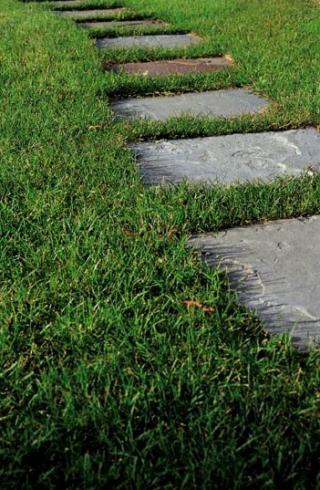Have a Healthy Lawn and Save!

Good soil preparation
... is essential. Use 4-6" of good quality topsoil and add compost to provide nutrients and improve the soil texture. The ideal texture is loamy.
Use drought resistant grasses
... which will tolerate long periods of dry weather. For existing lawns these can be seeded in r gular spring maintenance. These grasses include: rescues, indiangrass,l big bluestem, little bluestem, canada bluegrass, timothy and some varieties of kentucky bluegrass.
Do not cut lawns so short
... two inches is too short. The cut should be 3-3.5 inches. Make sure your mower blade is sharp so it makes a clean cut.
Water infrequently and deeply
... enough to wet the root zone plus a small distance below. Light watering discourages deep root growth, leaving grass more susceptible to drought and most of the water quickly evaporates.
Water in the early morning
... and avoid watering in the wind or when the ground is already wet.
Reduce the size of the lawn
... plant more wildflowers and shrubs. These don't require as much watering.
Provide some shade for the lawn
How Much Water Will You Use to Irrigate Your Property? And how much might it cost?
... The answer to both questions is probably way too much. In New England, an average half acre of lawn requires as much as 1” of water per week or about 13, 577 gallons of water or $93 each week ($1116 per quarterly bill). The District highly recommends you test and set your irrigation system to make sure that you are not watering too much. Remember that most irrigation systems are automatic and run on timers. Even if you don’t see your lawn being watered, the system is still using water that you must ultimately pay for.
 Receive a free magnet
Receive a free magnet
As a reminder of the
Outdoor Water Use Bylaws,
Send your request via email

